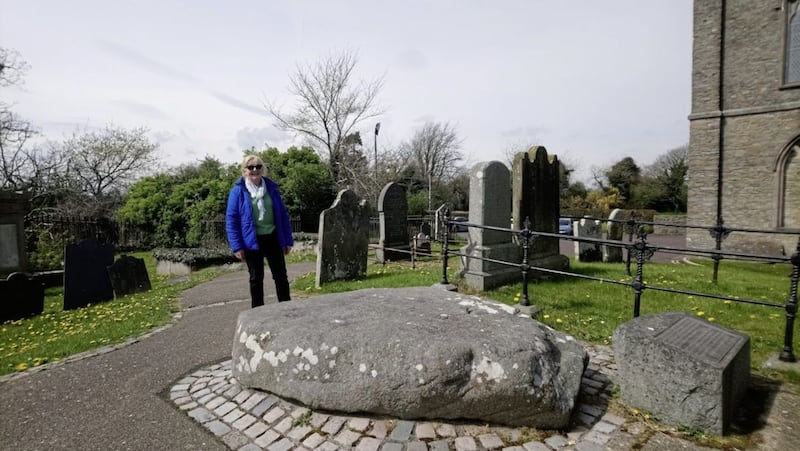SAINT Brigid is the patroness of Ireland and one of the most widely revered saints both here and beyond. She lived in the period 450-526AD and was a visionary spiritual leader and inspirational woman.
Brigid was recognised as a saint from around the 7th century and a number of different 'lives' of Saint Brigid were written, which is indicative of her cult following. Her feast day is on February 1, the first day of spring - 'Imbolc' - in the Celtic Calendar.
There are three other feasts in the Celtic calendar: May 1, Beltane; August 1, Lúnasa; and November 1, Samhain. East of the feasts has associated with it a specific set of beliefs and customs.
There was a pre-Christian aspect to the feast on February 1. The main importance of the feast of Saint Brigid would appear to be that it was a Christianisation of one of the key dates in the farming year in Ireland.
In earlier centuries in Ireland and in many areas Saint Brigid's Day was observed as a holiday and some farming related activities were not permitted.
This month the government in the Republic confirmed that February 1 will be a new bank holiday, beginning in 2023. This is an inspired choice of date for a new national holiday.
The main customs associated with Saint Brigid's Day are the making of Saint Brigid's crosses, the Brídeóg and the Brat Bríde. These customs were traditionally practised on the eve of Saint Brigid's feast day as according to Celtic timing, night came before day.
The custom of making Saint Brigid's crosses is still widespread throughout Ireland. There are regional variations in the design and composition of the cross. The most common one is the simple four armed cross.
The explanation of the custom is that Saint Brigid made the cross when she was comforting a dying man who wished to convert to Christianity, and placed it in his hands.
People believe that the Saint Brigid's cross offers protection from adversity for their homes, family and animals. Today in Co Down farming and non-farming families still want to get a Saint Brigid's cross for this reason. In Ulster a three-armed cross was placed in the stable or byre for the protection of animals.
Throughout my life I have made Saint Brigid crosses for our home. As a teacher I have taught groups of pupils how to make the cross. It is important that we pass on customs and traditions to the next generation and do not lose the wealth of culture we have in Ireland.
The Brídeóg is another custom associated with Saint Brigid's Day. It consisted, or consists, of a group of young people called brídeoga, 'biddies' (girls) or 'biddy-boys' going from house to house carrying an effigy of Saint Brigid, or 'Biddy'.
The children received some donation at each house visited. Often a doll was made for the occasion. The body of the doll may have been made from a sheaf of straw. A ball of hay, straw or turnip was used to represent the head.
It was usually constructed with a strong stick or churn dash at its core. The use of the churn dash was thought to reflect the saint's association with dairying. A purchased rag doll might be used.
Whether a doll was made or purchased, it was a representation of Saint Brigid and was dressed in white. The original objective of the exercise was the collection of alms for the poor.
The group always provided some entertainment for the homes visited with singing or music. The girls and boys in the group dressed up in disguise for the occasion. The custom lasted longest in Co Kerry and still survives today in a few areas.
The third important custom which was widespread throughout Ireland is known as the brat Bríde (St Brigid's cloak).
A piece of cloth, larger than a handkerchief, was put on a bush outside the home on the eve of Saint Brigid's feast day and it was not usually brought in until morning.
The belief was that when Saint Brigid was travelling around the country that night and she came across the cloth she blessed it with the curative powers of her cloak.
It was put away and used as a healing cloth throughout the year for sickness, pain and as protection against harm. With changes in society this custom has only survived in some areas including the south and west of Ireland.

Saint Brigid, who is strongly associated with nature and farming, is a saint for our times. With the environmental crisis facing us we can learn from the reverence which the early Celtic saints including Saint Brigid showed towards nature. They appreciated the fundamental importance of nature to humanity.
Saint Brigid cared deeply about the poor, needy and marginalised and in our own time "the cry of the poor and the cry of the earth constantly make themselves heard pleading for justice and peace" (words of Pope Francis in his message for the 55th World Day of Peace on January 1).
The challenges we face today are much greater than those in the 5th and 6th centuries but the need for social justice is the same. May the life of Saint Brigid be an inspiration to us to take action for a better world.
Saint Brigid is buried on an ancient Christian site, on the Hill of Down in a grave with Saint Patrick and Saint Colmcille. The grave is beside the magnificent Down Cathedral in the historic town of Downpatrick, Co Down.
If you would like to learn about Saint Brigid, see a demonstration of cross-making and make your own personal cross, Brigid Watson will be leading a 'Saint Brigid Experience - Brigid: Saint or Goddess' at the Saint Patrick Centre, Downpatrick on February 1 and 26 and March 20. More information at sustainablejourneysireland.com and saintpatrickcentre.com.




